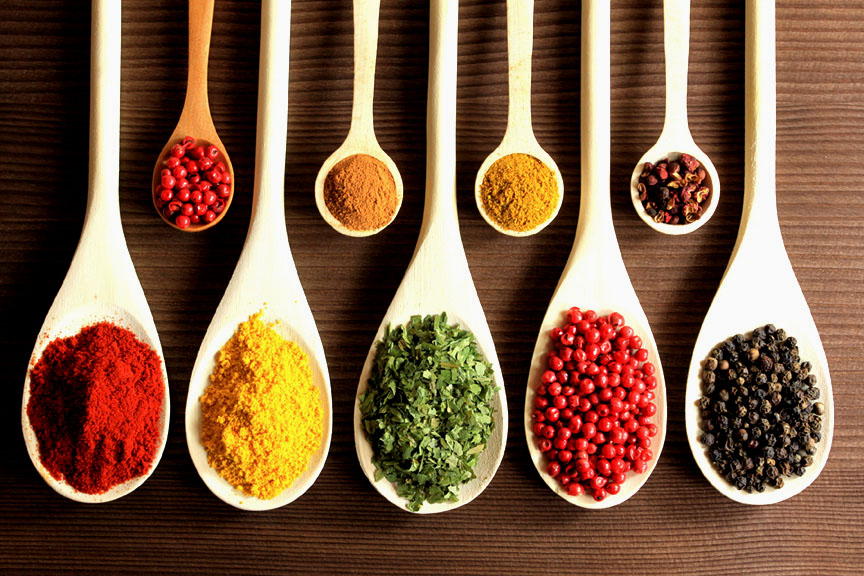The pursuit of spices has shaped the history of the modern world. The desire of Europeans and other cultures for these exotic flavorings sowed the seeds of modern globalization. Today, with a cornucopia of spices available at our local stores, it’s hard to imagine a time when they were a scarce luxury only the very wealthy could afford.
What Is a Spice?
Spices and herbs often go hand-in-hand but have distinct differences. Herbs are typically plant leaves, while spices come from aromatic parts of plants like roots (ginger), bark (cinnamon), flowers (saffron), berries (peppercorn), and seeds (cumin).
Herbs are most potent and flavorful when fresh, but spices gain their potency during the drying process, activating their natural enzymes. This means you can enjoy a variety of spices year-round, offering a sensual journey for your taste buds.

The Curative Kitchen: Spice by Spice
Your kitchen spice rack holds an alphabet soup of delicious and healthful delights. You may be surprised to learn how many health benefits you can reap from the following common taste enhancers:
- Basil – Rich in vitamin A, basil supports cardiovascular health and cholesterol wellness. It’s perfect for tomato-based sauces, poultry stuffings, white fish, and vegetables.
- Black Peppercorns – Stimulating taste buds to signal the stomach to produce hydrochloric acid, aiding digestion. Piperine, its active ingredient, may enhance the bioavailability of certain nutrients and drugs. Use black pepper liberally as a sodium-free flavor enhancer.
- Cilantro – Traditional herbal medicine credits cilantro with promoting urinary tract health. Cilantro is virtually inseparable from Southwestern cuisines – what would salsa be without it?
- Ginger – A celebrity among spices, the sweet-hot root quells nausea and vomiting due to motion sickness and chemotherapy. It supports circulatory health, joint function, and head well-being. Enjoy ginger baked into sweet treats like gingerbread or spicy Indian or Asian dishes.
- Oregano – Who can imagine pizza without oregano? Its volatile oils encourage healthy digestion. The spice is also a source of antioxidants, which protect against damage to cell structures.
- Rosemary – This divine accompaniment to roast chicken and lamb dishes is a traditional remedy for gaining strength after illness and soothing indigestion. Today, we know that merely the scent of Rosemary can, in fact, boost memory and cognitive performance.
- Vanilla – Revered for the sweetness it imparts, vanilla may be as beneficial to our health as it is delicious. The beans are a rich source of antioxidants, including a crystalline compound known as vanillin.
Spice Up Your Health

Specific spices can boost the activity of the immune cells, promote the elimination of toxins and wastes from the body, help keep the circulatory system in tune by increasing blood flow, and so much more. But are all spices safe to use? How soon can you expect to see the health benefits of using spices? Can spices be used along with prescription medicines? Find answers, a “Spice by Health Benefits Chart,” recipes, and more in my book, A Hug in a Mug: Revitalize with Fruits, Veggies, Juices, Teas, Soups, Spices & Healthy Living Extras.

Susan Smith Jones, Ph.D.: Author of over 33 books, including Invest in Yourself with Exercise, Be the Change, Kitchen Gardening, Choose to Thrive, Wired for High-Level Wellness, A Hug in A Mug: Using Herbal Teas, Culinary Spices & Fresh Juices as Medicine and UPLIFTED: 12 Minutes to More Joy, Faith, Peace, Kindness & Vitality. Visit: SusanSmithJones.com



Leave a Reply